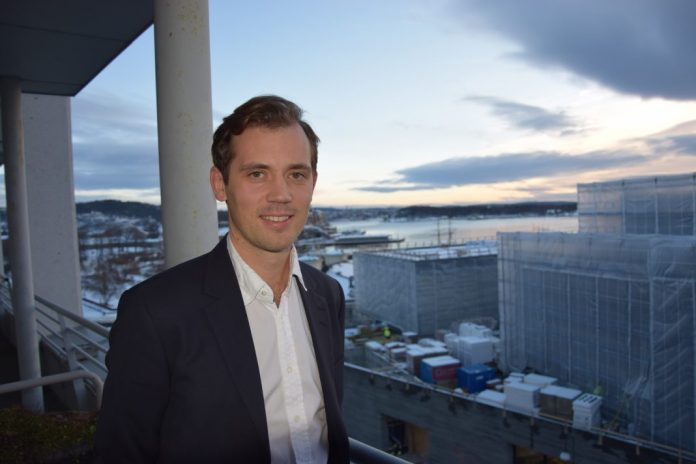But Carl-Emil Kjølås Johannessen, seafood analyst at investment bank Pareto Securities, doesn’t expect 2018’s stock market to repeat itself next year.
“We believe in a price of NOK 62 (EUR 6.6) per kg on average next year. If it comes to that, it will be the highest salmon price ever. The reason that our estimate, is that we see a tight supply side,” said Johannessen.
He flips a pile of sheets on the table and finds an analysis that Pareto sent out to its customers on January 5th this year. “Strong outlook despite recent price drops” said the headline.
“In January, we saw a large upside in most of the shares and believed an increase of around 30-40 percent. Our opinion was that the very negative development in the shares at the end of 2017 was far too strong. We looked at the fact that the volumes had been very high, and the prices then dropped, as a one-off, and thought it was a good buy option,” said Johannessen.
Other expectations for 2019
But 2018 exceeded their expectations. Johannessen finds another sheet and shows how Pareto adjusted as the year passed. From NOK 56 (EUR 5.7) – 58 (EUR 5.9) – 60 (EUR 6.1) per kilo in annual average.
Johannessen believes the expectations for 2019 are something completely different than the expectation was for 2018 was at the same time last year and that much of the upside has probably already been taken out of many of the shares. Anyway, if you have a short time perspective.
“If next year will be as we think, then the shares will not go another 50 percent, as they have done this year. If it is going to be just as evolving, we need prices well up in the 60s (NOK) on average, in conjunction with the companies having to deliver on cost. If you have a 12-month time horizon, we still believe that there are shares you should own, but you should not expect the return in 2018 to repeat in 2019,” he added.
Underestimated the demand
There were not many who believed in such an adventurous development in the stock market as we saw in 2018 at the beginning of the year.
“A lot of analysts were negative at the beginning of the year, prices in Q4 2017 were much weaker than expected. At the same time, supply growth in 2018 expected to be high. It turned out to be somewhat smaller than what people thought,” said Johannessen.
But first and foremost, he believes that the reason for the price increase in 2018 is that many underestimated the amount of demand.
“Nobody assumed that prices should rise to NOK 70 (EUR 7.1) at the beginning of the year. Many had not believed the demand side was as strong as it turned out to be. The stock market also got a confirmation that the salmon market is much stronger than it looked in Q4 2017, when prices fell to 40 (EUR 4.1),” he said.
NOK 70 next year
Johannssen said that Pareto believes the NOK 70 (EUR 7.1) per kilo will happen again in 2019.
“Overseas in particular, the willingness to pay is very high. When you add all the costs the overseas buyers have, it doesn’t matter if the price in Oslo is 55, 60 or 70 (EUR 5.1 – 60 – 7.1). At times there are also less fish available, when the offer is low enough, the price is pushed quickly up to NOK 70 (EUR 7.1),” he said.
Do you think EUR 7.1 will be the price ceiling?
“Maybe in the short term, it seems that when prices reach up to NOK 80 (EUR 8.2) per kilo, there is little volume. Someone could manage to pay even more, but it takes time to move that limit higher. I do not think it’s hit the ceiling yet. But NOK 100 (EUR 10.2) in 2019 sound unlikely,” he added.
Awaiting growth in 2019
Johannessen says that they believe in a small increase in salmon production, both in Norway and in Chile.
“We believe that Norwegian production will increase by around six percent, and Chile by around three percent. In Norway, we believe in improvement in the biology and that there are some more fish in the sea next year, while in Chile there are a bit more fish to harvest,” he added.
At the same time, Johannessen believes that Scotland will return in 2019 with a 15-20 percent increase, which in Pareto’s estimates will contribute to globally increase.
“We forecast a global increase of around 5.5 percent,” concluded Johannessen.


